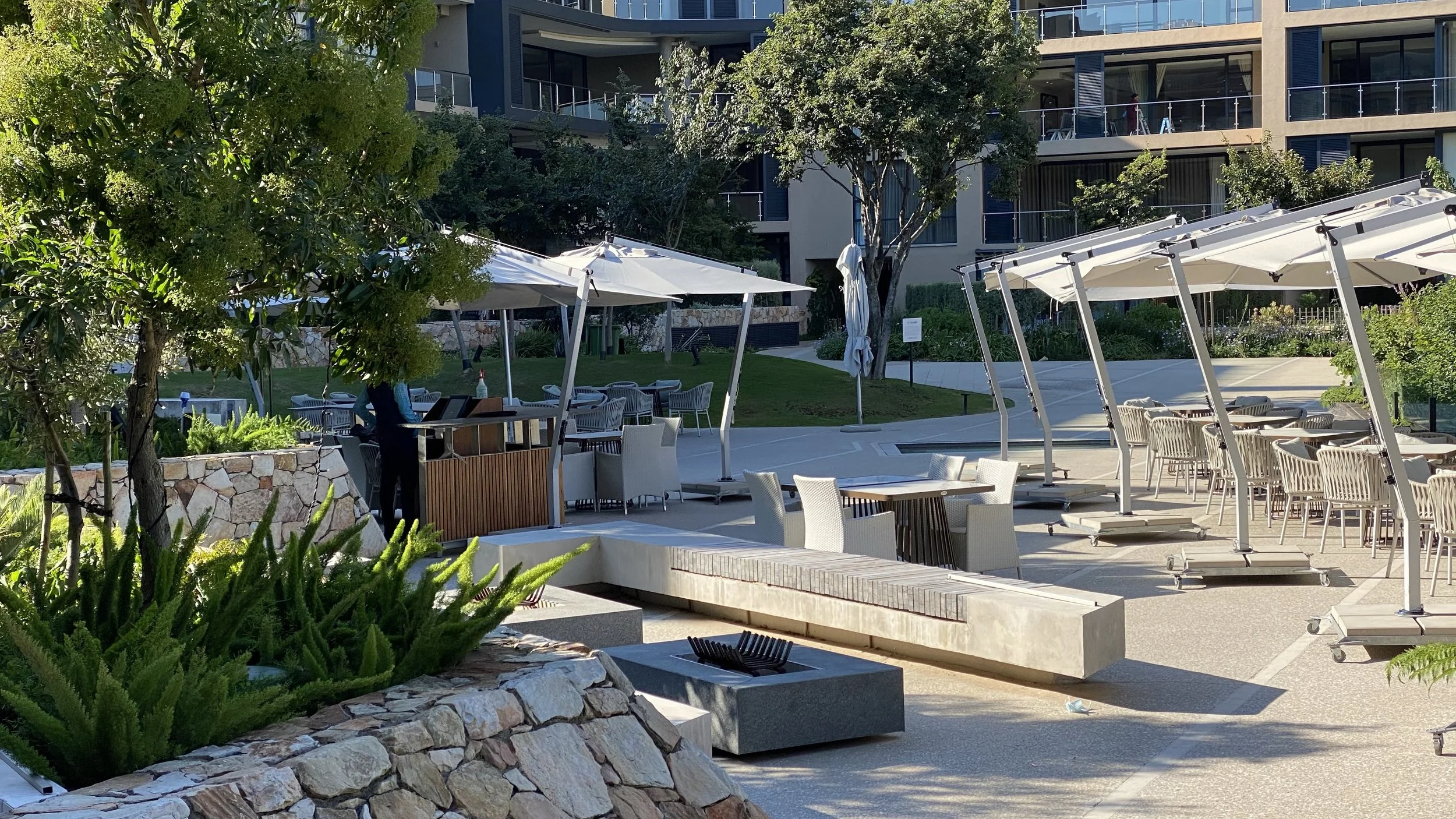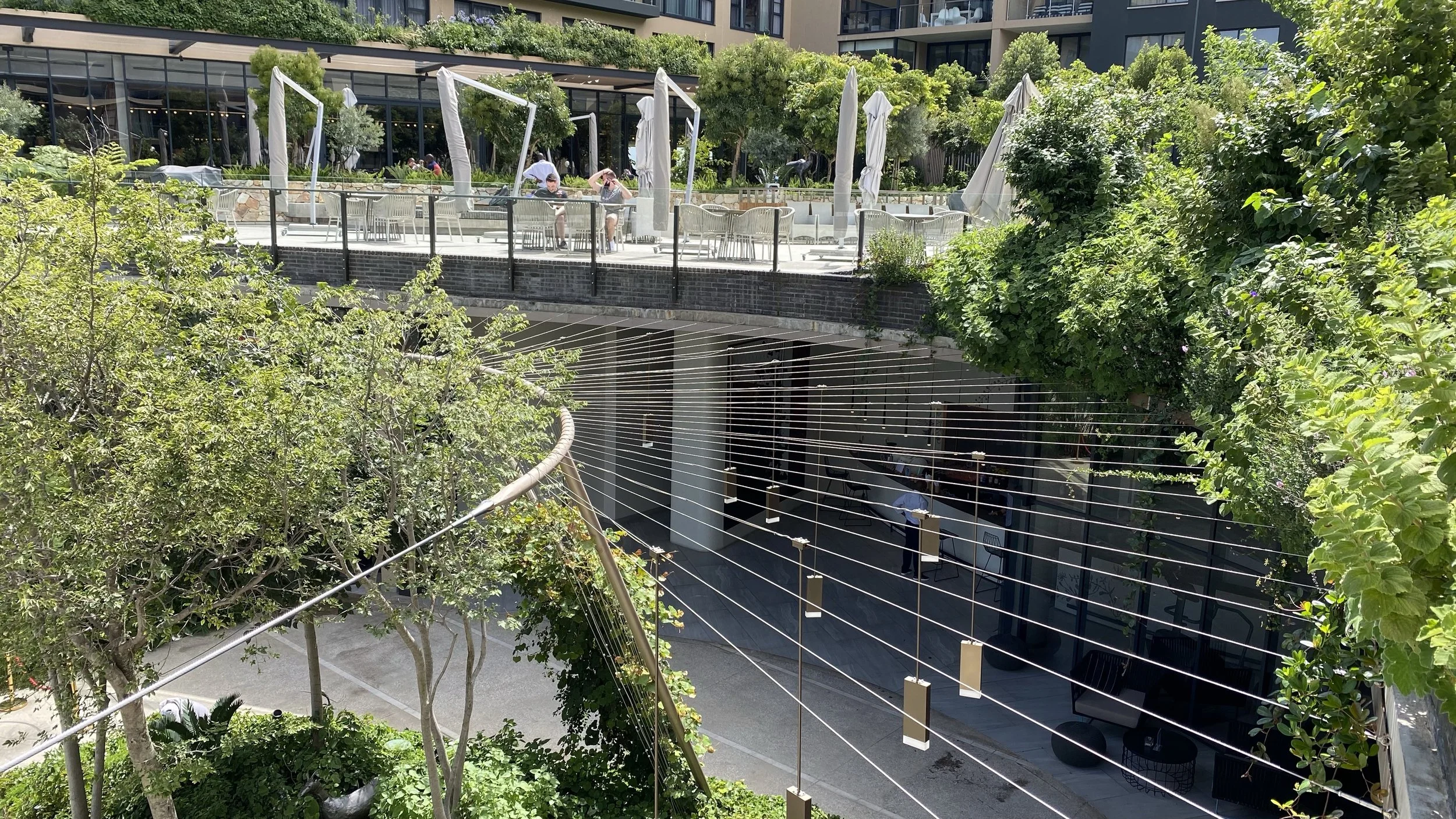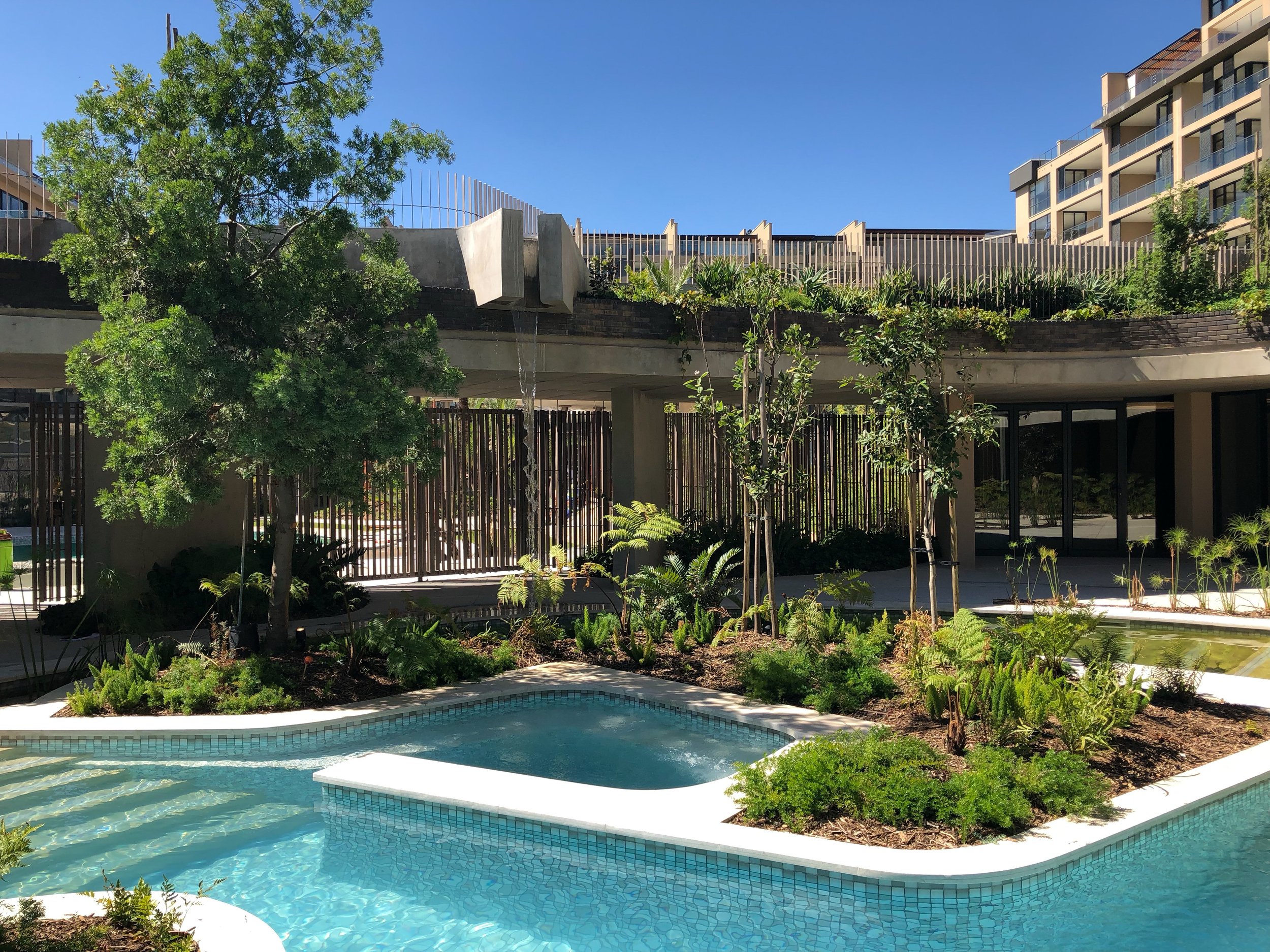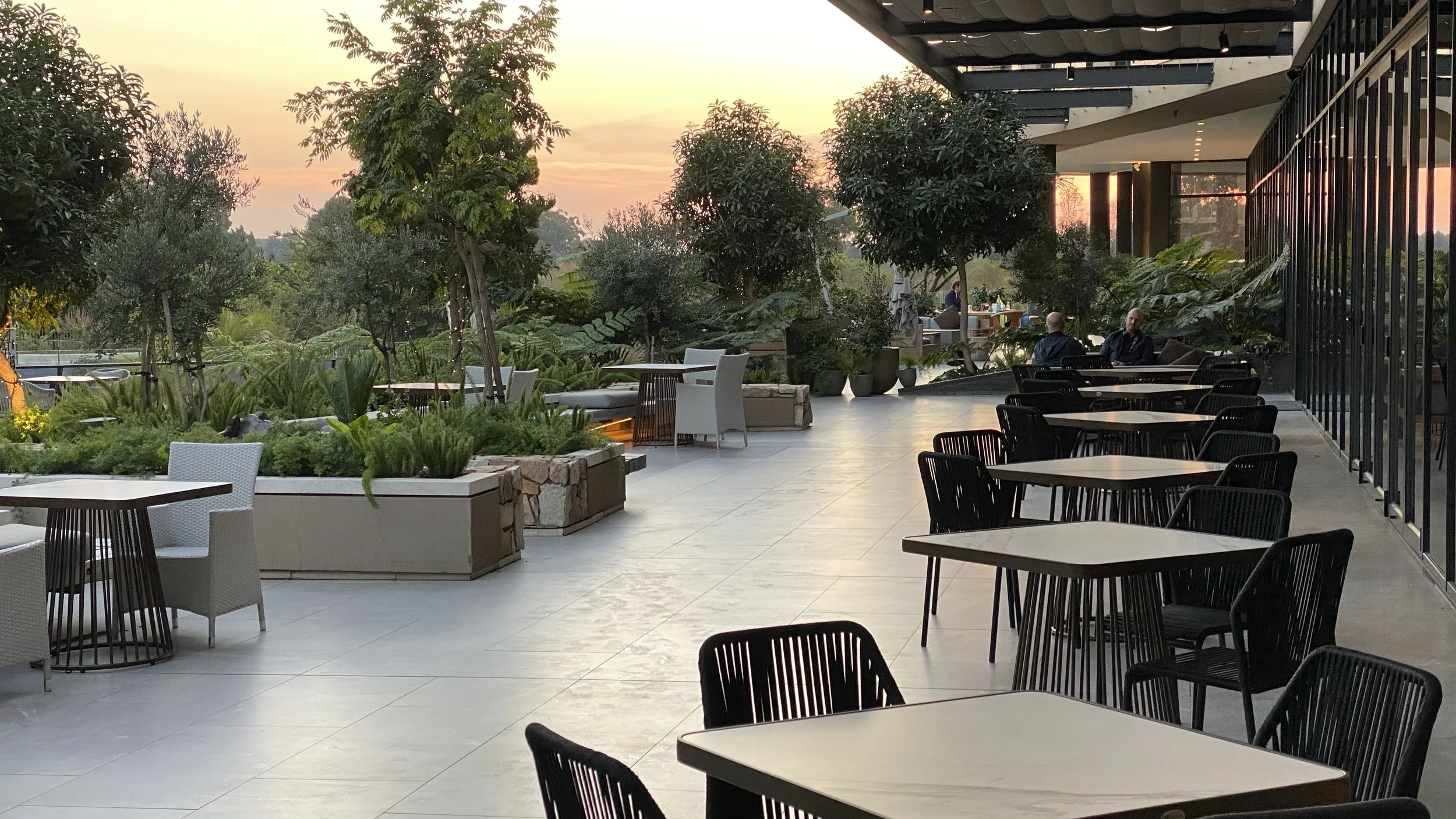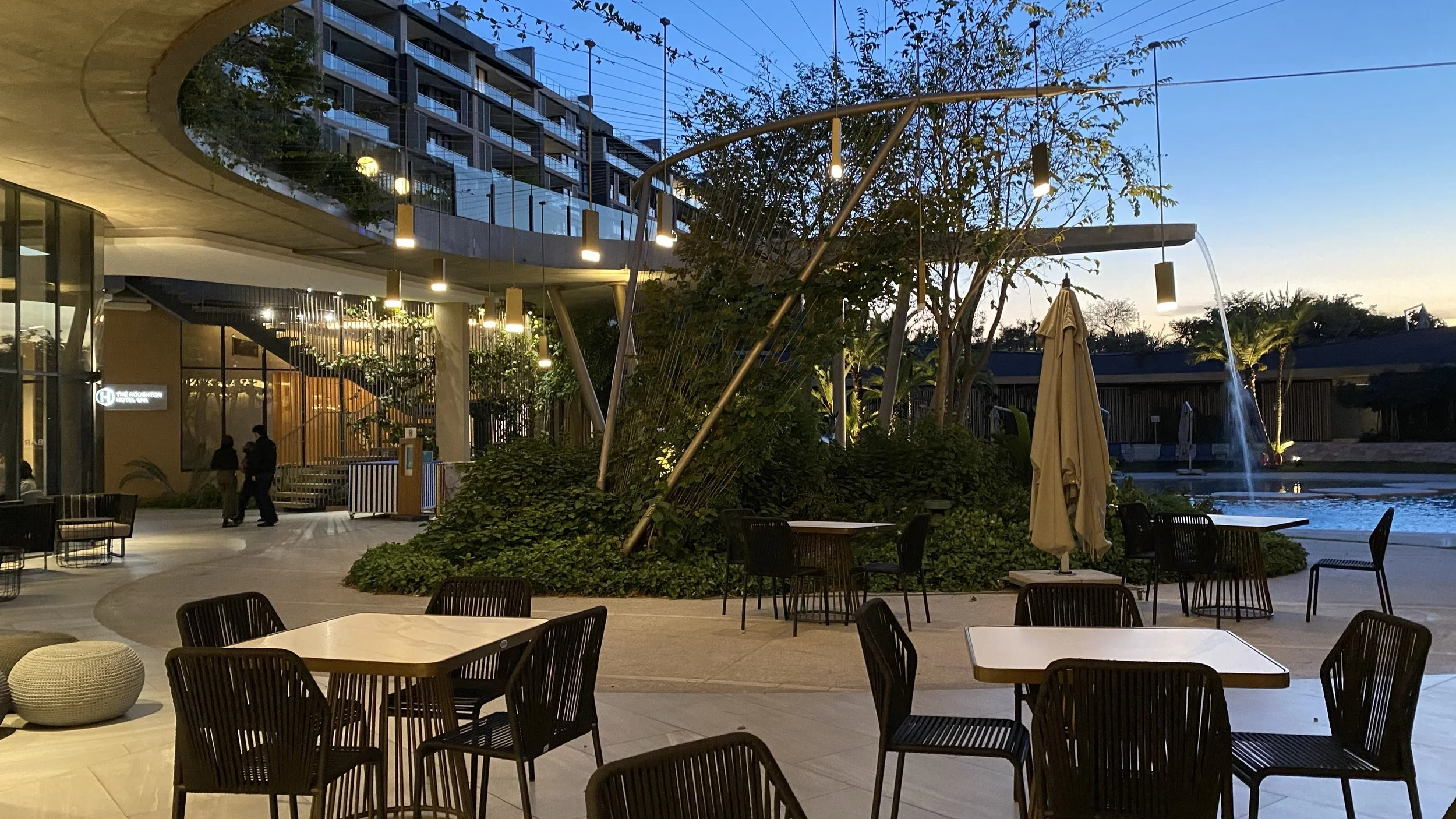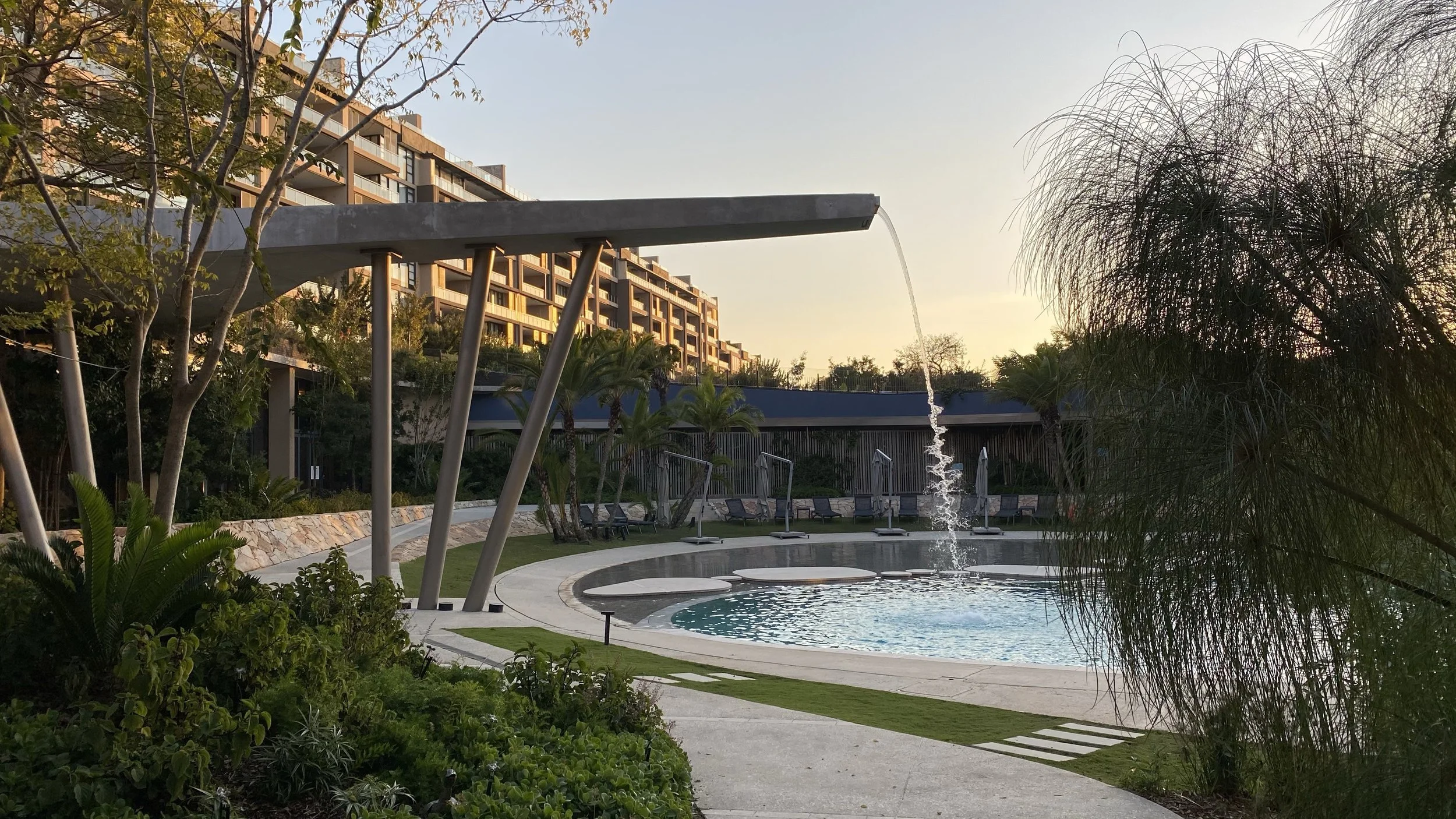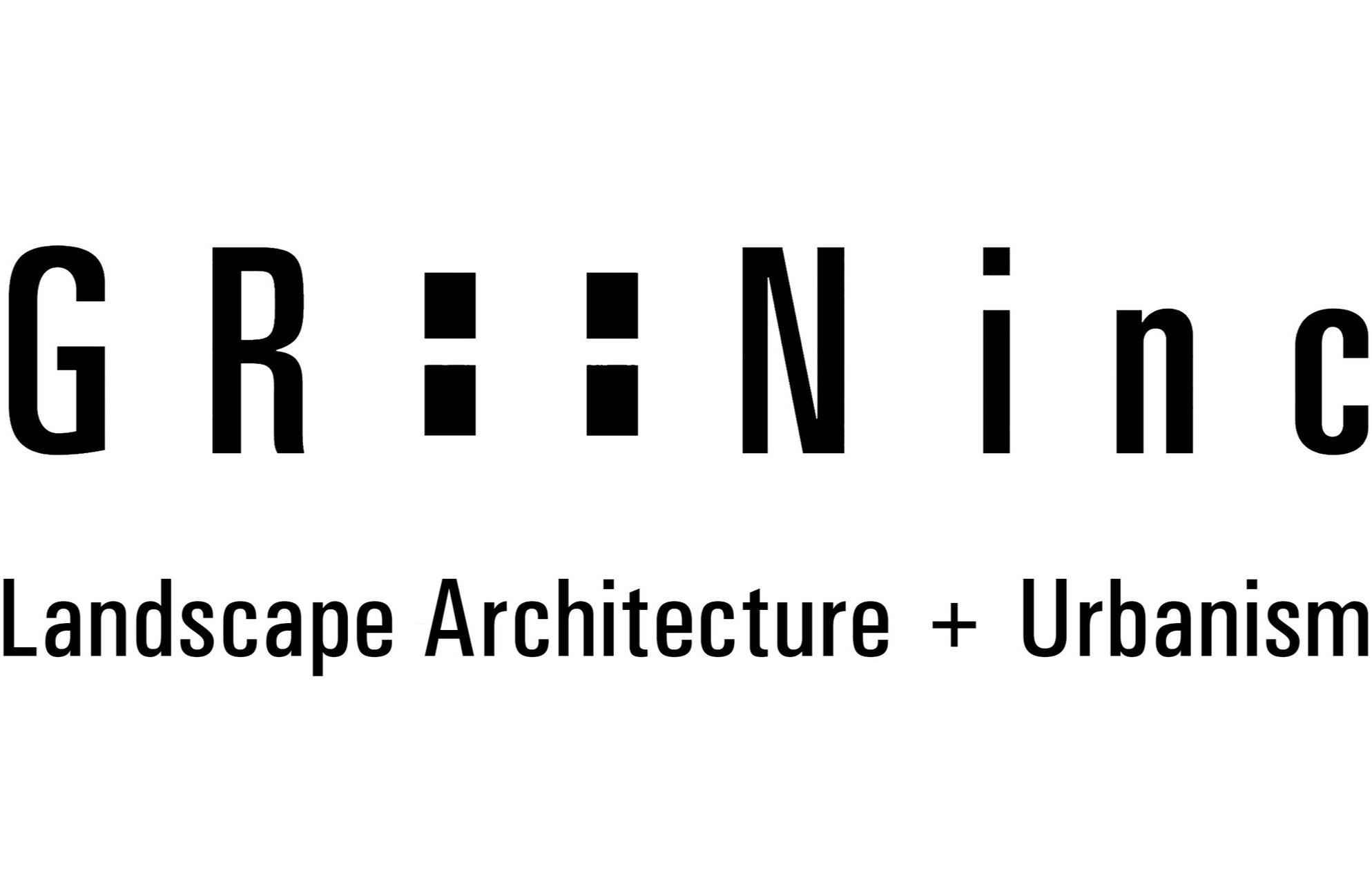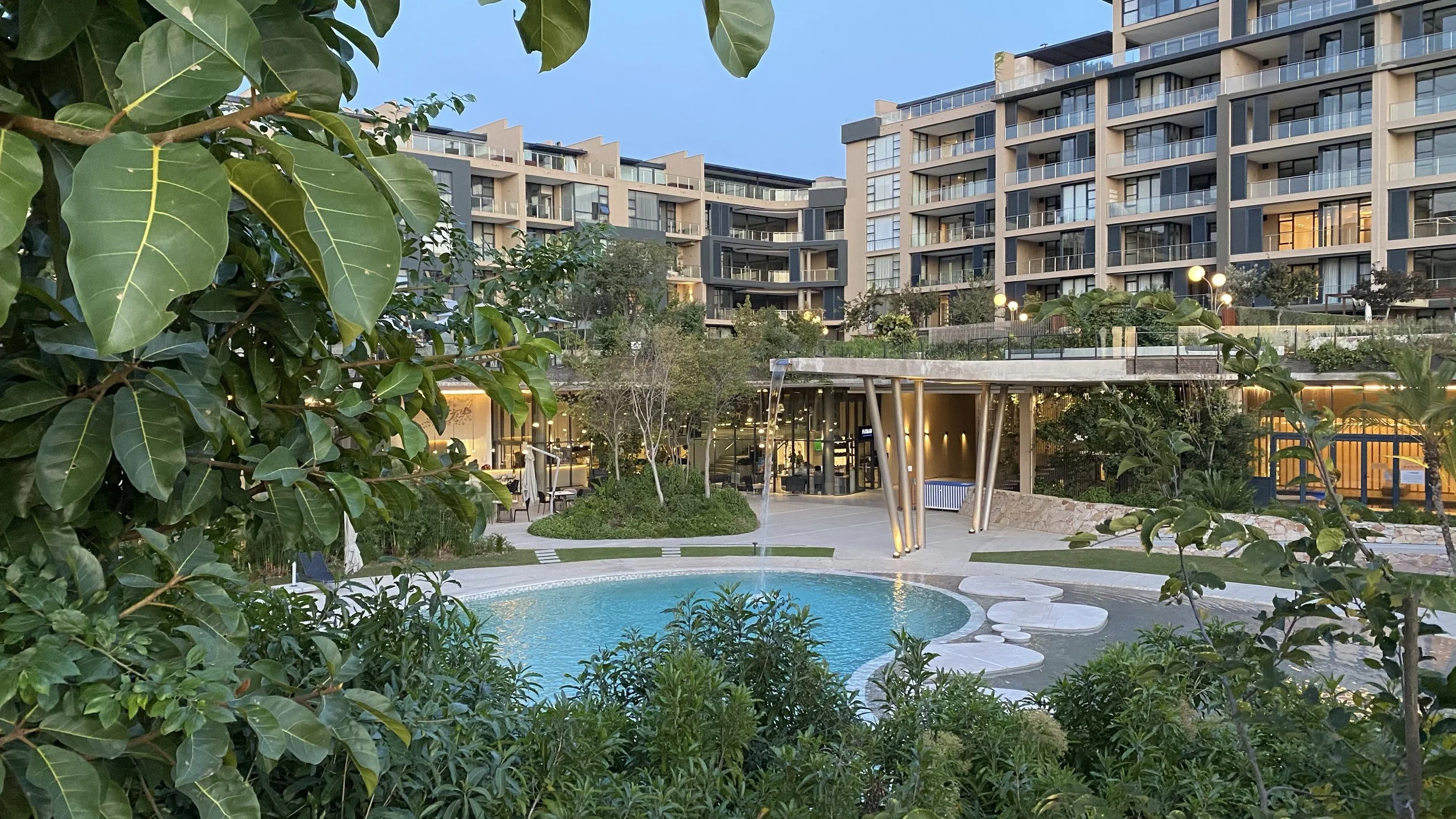
Houghton Hotel
Houghton, Johannesburg, South Africa | 2017
Collaborators: Boogertman + Partners | DSGN | Head Interiors
Client: Seven & Twelve on Houghton
The concept for the landscape design of this development was to reconnect the visitor to the site using water. An underground river, flowing off the local ridges, feeds the streams and dams of the adjacent golf course. This river runs directly below the hotel site and the hotel gardens attempt to reconceptualise this as a surface feature.
Modelled around the idea of a highveld / Drakensberg waterfall, a series of linear concrete water features and ponds meander and fall from terrace to terrace, ultimately falling into two large pools on the lowest level. Although not physically connected, the ponds and streams give the sense that the water connects with the adjacent streams in the golf course. In reality, water entering the hotel basement is collected and stored in a subterranean. tank. This water is used both for irrigation and to top up the water features and pools. Within the series of water features, water is also separated into chlorinated and natural systems. Both feed into pools that can be accessed for swimming.
Using terracing and vegetation, the outdoor spaces also assist in breaking down the verticality of the building so that each space has a human scale.
The visitor will move through a number of garden spaces, including:
An upper terrace connected to the restaurant, deli and sky bar;
A raised adult pool;
A sunken garden with family pool, pergola and cocktail bar;
A sunken spa garden with pools, sauna, steam room and outdoor shower;
A conference break-out space with reflection pond; and
A natural stream connecting to the golf course.
Polished concrete, travertine and terrazzo, having similar light hues, are used in combination to create a neutral surface over which the water flows and through which a palette of forest vegetation emerges.
The upper terraces are planted with a mix of perennials and grasses, keeping views across to the golf course open, while the sunken gardens below contain a dense and rich forest vegetation. All the plants used are indigenous to South Africa with a large portion being locally indigenous to the Highveld.




